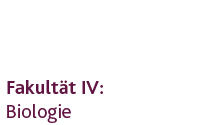Literatur (ausgewählt)
Dall, S. R. X., Giraldeau, L.-A., Olsson, O., McNamara, J. & Stephens, D. W. 2005. Information and its use by animals in evolutionary ecology. Trends in Ecol. Evol. 20, 187-193
Danchin, E., Giraldeau, L.-A., Valone, T. J. & Wagner, R. H. 2004. Public information: from noisy neighbors to cultural evolution. Science 305, 487-491
Doucet, S. M., Yezerinac, S M. & Montgomerie, R. 2004. Do female zebra finch (Taeniopygia guttata castanotis) copy each others mate preferences? Can. J. Zool. 82, 1-7
Druillion, D., & Dubois, F. 2008. Mate-choice copying by female zebra finches, Taeniopygia guttata: what happens when model females provide inconsistent information? Behav. Evol. Sociobiol. 63, 269-276
Dubois, F. 2007. Mate-choice copying´in monogamous species: should females use public information to choose extrapair mates? Anim. Behav. 74, 1785-1793
Endler, J. A. & Basolo, A. L. 1998. Sensory ecology, receiver biases and sexual selection.Trends Ecol. Evol. 13, 415-420.
Freeberg, T. M., Duncan, S. D., Kast, T. L. & Enstrom, D. A. 1999. Cultural influences on female mate choice: an experimental test in cowbirds, Molothrus ater. Anim. Behav. 57, 421-426.
Heyes, C. M. 1994. Social learning in animals: categories and mechanisms. Biol. Rev. Camb. Philos. Soc.69, 207-231.
Hörster, A., Curio, E. & Witte, K., 2000. No sexual imprinting on a red bill as a novel trait. Behaviour 137, 1223-1239.
Krebs, J. R. & Davies, N. B. (1996). Einführung in die Verhaltensökologie. Berlin Blackwell Wissenschaftsverlag.
Mousseau, T. A. & Fox, C. W. 1998. Maternal effects as adaptations. Oxford, Oxford University Press.
Møller, A. P. & Alatalo, R. V. 1999. Good-genes effects in sexual selection. Proc. R. Soc. Lond B 266, 85-91.
Swaddle, J. P., Cathey, M. G., Correll, M. & Hodkinson, B. P. 2005. Socially transmitted mate preferences in a monogamous bird: a non- genetic mechanism of secual selection. Proc. R. Soc. B. 272, 1053-1058
Trivers, R. L. (1972). Parental investment and sexual selection. In Sexual Selection and the descent of man (Campbell, B., ed.) 1871- 1971. Chicago, Aldine Atherton, pp. 136-179
Westneat, D. F., Walters, A., McCarthy, T. M., Hatch, M. & Hein, W. K. 2000. Alternative mechanisms of nonindependent mate choice. Anim. Behav. 59, 467-476
Witte, K. 2006. Mate choice in fish. In: Fish Cognition and Behaviour, Ed. Brown, C., Laland, K. N. & Krause, J. Blackwell Publishing, p.70-95.
Witte, K. & Caspers, B. 2006. Sexual imprinting on a novel blue ornament in zebra finches. Behaviour 143, 969-991
Witte, K. & Curio, E., 1999. Sexes of a monomorphic species differ in preference for mates with a novel trait. Behavioral Ecology 10, 15- 21.
Witte, K., Hirschler, U. & Curio, E., 2000. Sexual imprinting on a novel adornment influences mate preferences in the Javanese Mannikin. Ethology 106, 349-363.
Witte, K. & Sawka, K. 2003. Sexual imprinting on a novel trait in the dimorphic zebra finch: sexes differ. Anim. Behav. 65, 195-203
Zann, R. A. 1996. The zebra finch. A Synthesis of field and Laboratory Studies. Oxford Ornithology Series.
